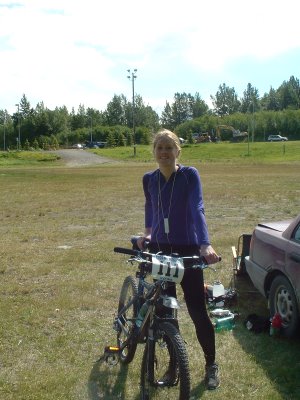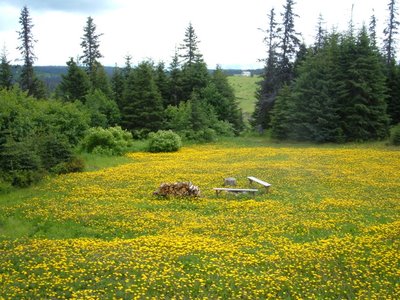 Date: June 24 and 25
Date: June 24 and 25Mileage: 168.2
June mileage: 647.3 (inc. 18 miles June 22)
Temperature upon departure: 63
I'm back from the 24 hours of Kincaid race - long, dusty, hilly. Surprising technical stretches. Moose on the trail. Hills. Psycho porcupines. Deteriorating judgment. Long. Not that I'm nearly lucid enough right now to post a race report. The race organizers haven't posted the race results yet, but I surprised myself with my progress. According to the last updates I saw before I left Anchorage, I placed anywhere from third place to sixth place among all solo 24-hour cyclists, with the top finisher at 22 laps, second place at 19, and three others that were near me at about 16. Out of two solo women, I actually came in first by several laps. Hopefully they'll post the results on the Web site soon.
For 22 hours and 55 minutes I pounded out 16 loops, at 10.5 miles a piece. I kept a consistent pace throughout the race - my fastest loop was 1 hour, 12 minutes and my slowest was 1 hour, 23 minutes, and I took a 5 to 25-minute break between each one. Besides somewhat debilitating but temporary stomach cramps and a sideways fall over an especially rooty stretch of trail, I felt pretty good and strong throughout the sleepless night. But sleep is what I need most right now; I'll fill in the details tomorrow.







